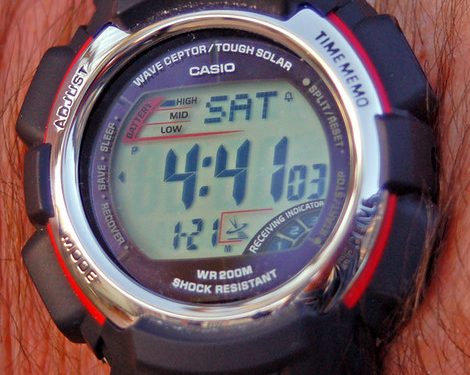In a time when sustainability and technological innovation are increasingly important, solar-powered watches stand out as an excellent solution for modern timekeeping. Unlike traditional mechanical watches or battery-driven quartz models, solar watches harness the energy of light—natural or artificial—to power the movement. This technology combines efficiency with environmental consciousness, making solar-powered watches an appealing choice for those looking to reduce their carbon footprint without sacrificing style or reliability. Let’s dive into the fascinating world of solar-powered watches, exploring their history, how they work, and why they are becoming a popular alternative for watch enthusiasts around the globe.
The Evolution of Solar-Powered Watches
The journey of solar-powered watches began in the 1970s, during a time when quartz technology was revolutionizing the watch industry. The Quartz Crisis had dramatically changed the landscape, making quartz watches cheaper and more accessible, while threatening traditional mechanical watchmaking. During this period of innovation, watchmakers began experimenting with new energy sources, and solar technology emerged as an exciting new frontier.
One of the first solar watches was introduced by Seiko in 1977, known as the Seiko Quartz Astron. This watch marked a major milestone in horology as it showcased the potential of using solar power to eliminate the need for frequent battery replacements. Soon after, Citizen introduced its Eco-Drive line in 1995, which further popularized solar technology by making solar-powered watches both stylish and affordable. The success of these early models laid the groundwork for the solar-powered watch industry we see today.
How Do Solar-Powered Watches Work?
At the heart of every solar-powered watch lies an ingenious system for converting light energy into electrical energy. Unlike traditional battery-powered quartz watches that need battery replacements every few years, solar watches use a small solar cell embedded in the watch dial. Here’s a breakdown of how this technology works:
1. Solar Cell
The solar cell, typically located just beneath the dial, is responsible for capturing light—whether from the sun or artificial sources. These cells convert the light into electrical energy, which is then used to power the watch. Modern solar watches are designed to be highly efficient, allowing them to function with minimal light, meaning you don’t need to spend hours in the sun to keep them charged.
2. Energy Storage
The electricity generated by the solar cell is stored in a rechargeable battery or capacitor. This energy storage unit acts as a power reserve, ensuring the watch continues to function even when it’s not exposed to light. Depending on the model, many solar-powered watches can store enough energy to run for several months or even years without exposure to light. This means that even if you keep your watch in a drawer for an extended period, it will still be operational when you decide to wear it again.
3. Power Management
Solar-powered watches are also equipped with advanced power management systems that help extend battery life and maintain accuracy. These systems can include features such as power-saving modes, which allow the watch to conserve energy by stopping the hands when the watch is not in use, and low-power indicators that signal when the watch needs more light exposure.
Advantages of Solar-Powered Watches
Solar-powered watches offer several significant advantages that make them a compelling choice for many watch enthusiasts. Here are some of the key benefits of choosing a solar watch:
1. Environmentally Friendly
One of the main advantages of solar-powered watches is their environmentally friendly nature. By harnessing solar energy, these watches eliminate the need for disposable batteries, which can be harmful to the environment when not disposed of properly. Instead of replacing the battery every few years, solar watches use rechargeable cells that can last for decades, reducing waste and the carbon footprint associated with battery production.
2. Low Maintenance
Unlike mechanical watches, which require regular winding and servicing, or quartz watches, which need battery replacements, solar-powered watches are largely maintenance-free. Once fully charged, many solar watches can run for months or even years without requiring any light exposure. This means you can wear them daily or store them for a long time without worrying about whether they’ll keep running.
3. Reliable and Accurate
Solar watches are powered by quartz movements, which are known for their accuracy. The consistent power provided by the solar cell ensures that the watch maintains its precision over time. With modern power management features, solar watches are dependable companions for any occasion, providing accurate timekeeping without the need for frequent adjustments.
4. Versatility in Design
Another attractive feature of solar-powered watches is their versatility in design. From sporty models to elegant dress watches, solar technology has been seamlessly integrated into a wide range of styles. Brands like Citizen, Seiko, and Casio have produced numerous models, allowing consumers to choose a solar-powered watch that suits their aesthetic preferences and lifestyle. Whether you want a classic leather-strap watch for formal occasions or a rugged dive watch for outdoor adventures, there’s likely a solar option for you.
Popular Solar Watch Brands
Several watch brands have become well-known for their expertise in solar technology, each bringing its unique approach to design and functionality. Here are a few of the most prominent brands leading the solar-powered watch revolution:
1. Citizen Eco-Drive
Citizen’s Eco-Drive collection is arguably the most recognized line of solar-powered watches in the world. Introduced in 1995, Eco-Drive watches have become synonymous with sustainability and innovation. Citizen’s focus on blending cutting-edge technology with elegant design has led to a diverse lineup that caters to both casual and luxury watch enthusiasts. With their advanced energy conversion and storage capabilities, Eco-Drive watches are highly efficient and require very little maintenance.
2. Seiko Solar
Seiko, a pioneer in the world of quartz and solar watches, offers a wide range of solar-powered timepieces under its Seiko Solar line. Seiko Solar watches are designed to be practical and versatile, with models that span everything from simple dress watches to robust diver’s watches. Seiko’s dedication to quality and affordability has made their solar models popular with those looking for a reliable, eco-friendly timepiece.
3. Casio G-Shock Solar
For those who want a rugged, adventure-ready solar-powered watch, Casio’s G-Shock series offers the perfect solution. Known for their durability and shock resistance, G-Shock solar watches are designed for people who lead active lifestyles. These watches feature tough solar technology that ensures they can be charged even under dim light conditions. Additionally, many G-Shock models come with features such as altimeters, compasses, and GPS, making them ideal for outdoor enthusiasts.
Challenges of Solar Watches
While solar-powered watches have numerous benefits, they are not without their challenges. Understanding these challenges can help potential buyers make informed decisions:
1. Light Dependency
The main drawback of solar-powered watches is their dependency on light. If a solar watch does not receive sufficient light exposure over a prolonged period, it may eventually lose its charge and stop running. Although most solar watches have power reserves that last for months, those who store their watches in dark places for extended periods may face the inconvenience of recharging them before use.
2. Limited Luxury Market Penetration
Another limitation of solar watches is their relatively limited presence in the luxury watch market. While brands like Citizen and Seiko have produced high-quality solar watches, luxury Swiss brands such as Rolex, Patek Philippe, and Audemars Piguet have yet to widely adopt solar technology. This means that watch enthusiasts looking for high-end, luxury solar-powered watches have fewer options compared to those interested in mechanical or traditional quartz watches.
The Future of Solar-Powered Watches
The future looks bright for solar-powered watches as more consumers seek sustainable alternatives in all areas of life. With ongoing advancements in solar cell technology, we can expect even more efficient energy conversion, smaller solar cells, and expanded use across different types of watches. As the world becomes increasingly aware of environmental issues, solar-powered watches are well-positioned to become an even more popular choice for both casual wearers and watch collectors.
Additionally, the integration of solar technology into smartwatches could be a game-changer. Imagine a smartwatch that doesn’t need to be charged every night but instead draws power from ambient light throughout the day. This kind of innovation would be a natural next step, blending the convenience of solar power with the features of modern smartwatches.
Final Thoughts on Solar-Powered Watches
Solar-powered watches represent a blend of tradition and innovation—combining classic watch designs with cutting-edge technology to create timepieces that are both practical and environmentally friendly. They offer a perfect solution for those who want a reliable, low-maintenance watch while also contributing to sustainability. With the rich history of solar technology, the diverse offerings from leading brands, and the potential for future advancements, solar-powered watches are likely to remain an important part of the watch industry for years to come. Whether you’re an avid watch collector or simply someone looking for a dependable timepiece, exploring the world of solar-powered watches is a rewarding journey.






